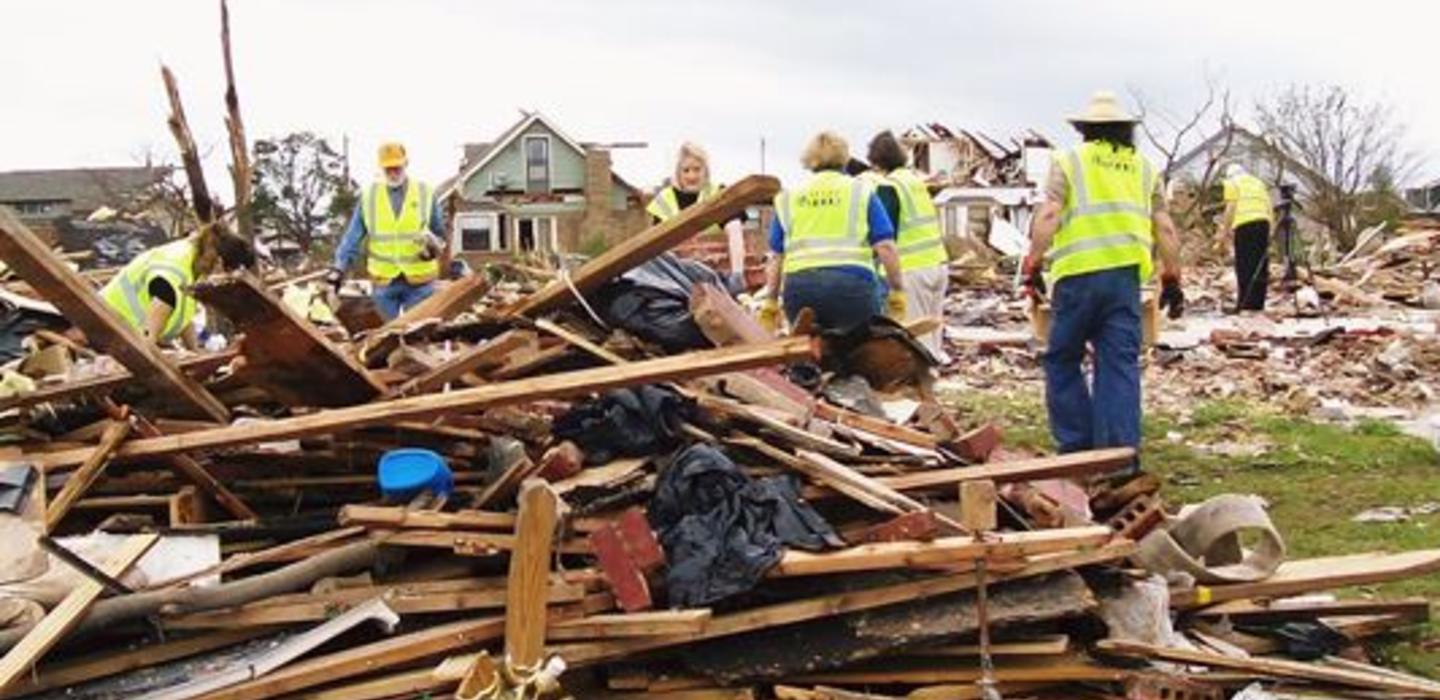
There are times when the government falls short of providing comprehensive disaster relief and management when calamities strike. This is where communities or the private sector come in. When there is an obvious shortcoming from legitimate institutions, private individuals rise to the challenge and readily chip in.
One example of the private sector coming together to provide relief to a disaster-stricken area is what happened after the tsunami hit South Asia in 2004. Approximately $13 billion was gathered to fund relief operations.
But the challenge of providing disaster relief does not end with collecting funds. It’s a demanding process that requires foolproof strategies to be in place. That does not mean only learned professionals can do it. You too can mobilize your own disaster relief efforts. That’s true even if you’re a stay-at-home mom whose most valuable resources are time and empathy.
However, before you jump right in, you have to educate yourself about disaster management. Here are some of the best practices you could follow.
- Proactive efforts
Disaster management should start before a calamity even strikes. There should be a system in place for disaster preparedness. This could either come from government institutions or private organizations working closely with disaster scenarios.
You need to consult with these texts. Doing so will allow you to partake in proactive information dissemination drives.
- Mobilize via social media
Social media’s relevance to modern living does not get more pronounced than during a calamity. This is when posts about your virtual friends’ breakfast or relationship squabbles get replaced with sympathy statuses at worst and calls to action at best. This is an opportunity for mobilization.
Use social media for crowdsourcing purposes. You can jump-start donations collection. You can also enlist your social network’s help for whatever logistical needs your relief response will require. ;
- Tailor-fit response
Remember that not all disasters are created equal. Although they are all a nuisance, some calamities are worse than others. Moreover, what a typhoon-ravaged community might need could be different from that of an earthquake-hit community. This is where needs assessment comes into play.
Before hitting the grocery store to purchase disaster relief supplies, make sure you’ve studied the scenario well. The worst that could happen is you sending out what you thought were essentials only to realize your beneficiaries have no use for them. For example, giving out packs of instant noodles to a fire-ravaged community that will have no means to cook them.
Supposed you’ve gathered enough funds to sponsor home repair after a disaster, make sure to conduct a home inspection first. Again, residential areas ravaged by flooding will have different needs from those ravaged by an earthquake.
- Work with a checklist
Checklists are vital to all activities requiring coordination. Basic as it is, a checklist is quite helpful. In the thick of highly-charged situations, you do not know when your memory will miss. So it’s better to be equipped with an itemized guide of everything you need to account for, from essential resources to necessary steps for the task at hand to be completed.
- Coordinate with government bodies
Just because you are working as part of the private sector does not mean that you can do without government intervention, or at the very least, guidance. The government has all the records you might need. For instance, the names of residents affected by a calamity.
Consulting with the government will also eliminate the possibility of uncoordinated efforts conducted by the private sector. For example, it will be a waste of resources if two private initiatives chose the same community to be their beneficiaries on the same day when other communities have yet to receive any assistance.
- Financial transparency
If you collect funds from donors, you should be able to provide a transparent financial report. That is if you do not wish to be accused of profiteering, which unfortunately happens. So keep all of your receipts and important records. Once the relief efforts are over, show them to your donors.
Leading a disaster relief operation is a daunting task. If you’re brave and tenacious enough to take on the challenge, kudos to you. Your dedication is worthy of praise and emulation. However, keep in mind that it is not about you. Ideally, you are doing service for service’s sake and not for personal glory. The latter could easily be unmasked, and it’s never a good look.
Now, if your heart is in the right place, please be guided properly. The best practices mentioned above should provide you with a sturdy enough foundation for your efforts.
Meta Title: How to Stage Community-led Disaster Management
Meta Description: When disaster strikes, communities should be prepared to give a response. Here are some of the best practices in staging disaster management.
Tags:







